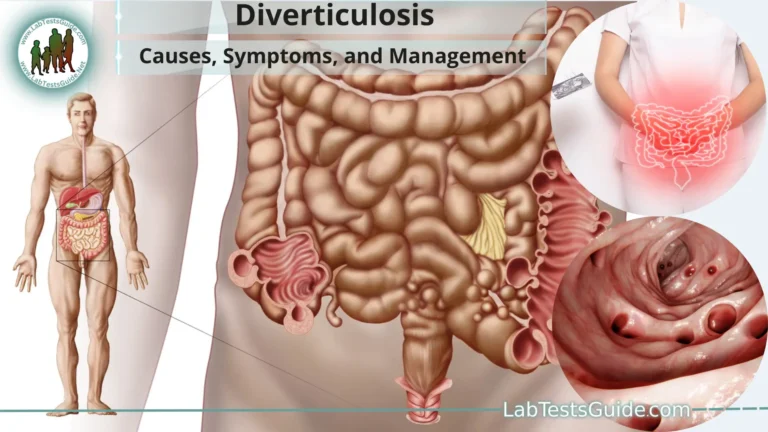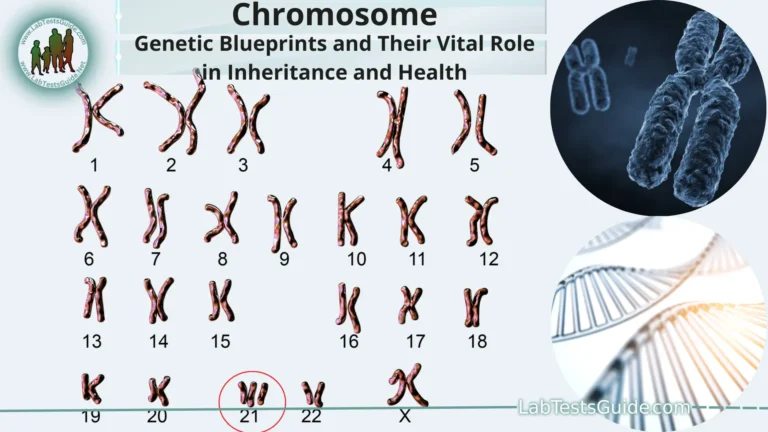Angioedema is a medical condition characterized by the swelling of the deeper layers of the skin and mucous membranes. It typically occurs in areas like the face, lips, throat, tongue, and sometimes the hands and feet. Angioedema can be painful and disfiguring, but it usually resolves on its own within a few days.

Definition of Angioedema.
Angioedema is a medical condition characterized by sudden, localized swelling that occurs in the deeper layers of the skin and mucous membranes, typically in areas such as the face, lips, throat, tongue, or sometimes the hands and feet. This swelling results from the accumulation of fluid in the tissues beneath the skin or mucous membranes, leading to the characteristic puffiness or swelling.
Angioedema can be caused by various factors, including allergic reactions to allergens like foods, insect stings or bites, medications, or latex. It can also occur due to non-allergic causes such as certain medications, genetic factors, infections, autoimmune disorders, or for unknown reasons (idiopathic).
Causes and Triggers:
Here are some common causes and triggers.
Allergic Angioedema:
- Foods: Certain foods can trigger allergic angioedema, including nuts, shellfish, eggs, and fruits like strawberries and kiwi.
- Insect Stings/Bites: Stings or bites from insects like bees, wasps, and ants can lead to allergic reactions and angioedema.
- Medications: Some medications, particularly antibiotics (e.g., penicillin), non-steroidal anti-inflammatory drugs (NSAIDs), and certain blood pressure medications (e.g., ACE inhibitors), can cause allergic angioedema as a side effect.
- Latex Allergy: Latex-containing products, such as latex gloves or balloons, can trigger allergic angioedema in individuals with latex allergies.
Non-Allergic Angioedema:
- Medication-Induced: Some medications can cause angioedema as a non-allergic side effect. This can include ACE inhibitors used to treat high blood pressure.
- Hereditary Angioedema (HAE): HAE is a rare genetic condition that leads to recurrent angioedema attacks due to a deficiency or dysfunction of certain blood proteins, such as C1 esterase inhibitor.
- Acquired Angioedema: This is a non-hereditary form of angioedema that can develop later in life due to various factors, such as autoimmune disorders.
- Idiopathic Angioedema: In some cases, angioedema may occur without an identifiable cause, making it idiopathic.
Other Triggers and Factors:
- Infections: Certain infections, such as viral or bacterial infections, can trigger angioedema in susceptible individuals.
- Physical Factors: Angioedema can be induced by physical triggers like pressure on the skin, cold temperatures (cold-induced angioedema), or exposure to sunlight (solar urticaria).
- Emotional Stress: Stress and emotional factors can exacerbate angioedema in some individuals.
- Underlying Medical Conditions: Angioedema may be associated with underlying medical conditions like autoimmune disorders, lymphoproliferative disorders, or malignancies.
Signs and Symptoms:
Common signs and symptoms of angioedema include.
Swelling:
Commonly affected areas include the.
- Face: Swelling of the eyes, lips, and cheeks is common.
- Throat and Tongue: Swelling in the throat and tongue can lead to difficulty breathing and speaking, which can be life-threatening and requires immediate medical attention.
- Hands and Feet: Swelling in the hands and feet can also occur.
Skin Symptoms:
Along with swelling, individuals with angioedema may experience skin-related symptoms.
- Redness or warmth in the affected area.
- Itchiness or a burning sensation.
- Pain or discomfort, especially when the swelling causes pressure on nerves or joints.
Gastrointestinal Symptoms:
In some cases, angioedema can affect the gastrointestinal tract, leading to symptoms such as.
- Abdominal cramping or pain.
- Nausea and vomiting.
- Diarrhea.
- Duration: Angioedema symptoms typically appear suddenly and can last for hours to several days, depending on the underlying cause and the effectiveness of treatment. Some individuals may experience recurrent episodes of angioedema.
Associated Symptoms:
The presence of other symptoms may depend on the underlying cause of angioedema. For example.
- Allergic Angioedema: Individuals may experience additional allergic symptoms, such as hives (urticaria), itching, or a history of allergic reactions.
- Hereditary Angioedema (HAE): Aside from swelling, HAE may cause abdominal pain, joint pain, and fatigue during attacks.
Prevention and Diagnosis:
Here are the key considerations for prevention and diagnosis.
Prevention:
Allergic Angioedema Prevention:
- Identify Allergens: If you have a history of allergic angioedema, work with an allergist to identify and confirm allergens responsible for your reactions.
- Avoid Allergens: Take steps to avoid allergens that trigger your angioedema. This may involve dietary changes, using allergen-free products, or taking precautions to prevent insect stings or bites.
Non-Allergic Angioedema Prevention:
- Medication Review: If you suspect that a medication is causing your angioedema, consult with your healthcare provider to discuss alternative medications.
- Hereditary Angioedema (HAE): If you have HAE, you may need ongoing prophylactic treatment to prevent attacks, such as C1 esterase inhibitor replacement therapy or other prescribed medications.
General Prevention:
- Stress Management: Reducing stress through relaxation techniques and stress management strategies may help prevent stress-induced angioedema.
- Physical Triggers: If you have known physical triggers like cold or pressure-induced angioedema, take precautions to minimize exposure to these factors.
Diagnosis:
- Medical History and Physical Examination: The first step in diagnosing angioedema involves a thorough medical history and physical examination. Your healthcare provider will inquire about your symptoms, their frequency, and any potential triggers.
- Allergy Testing: For allergic angioedema, allergists may perform various tests, such as skin prick tests or blood tests (specific IgE tests), to identify allergens responsible for your reactions.
- Blood Tests: Blood tests may be conducted to assess levels of complement proteins and rule out hereditary angioedema (HAE) or other related conditions.
- Imaging: In some cases, imaging tests like ultrasound or CT scans may be ordered to evaluate the extent of swelling, particularly if there are concerns about abdominal angioedema.
- Biopsy: In rare instances, a skin biopsy may be performed to help confirm the diagnosis and exclude other skin conditions.
- Trial of Medications: Sometimes, if the cause of angioedema remains unclear, a healthcare provider may prescribe antihistamines or corticosteroids to see if they alleviate the symptoms. If the symptoms improve with medication, it may support the diagnosis of angioedema.
- Specialized Testing (HAE): For suspected hereditary angioedema (HAE), specialized blood tests to measure levels of C1 esterase inhibitor and other complement proteins may be necessary for confirmation.
Treatment and Management:
Allergic Angioedema:
- Identify and Avoid Triggers: Determine the allergen responsible for the allergic reaction and take steps to avoid further exposure.
- Antihistamines: Over-the-counter or prescription antihistamines like cetirizine, loratadine, or diphenhydramine can help relieve itching and reduce swelling. Non-sedating antihistamines are often preferred.
- Corticosteroids: In some cases, your healthcare provider may prescribe corticosteroids (e.g., prednisone) to reduce inflammation and swelling.
- Epinephrine (in severe cases): If the swelling is severe and involves the throat or leads to difficulty breathing (anaphylactic angioedema), epinephrine (adrenaline) may be administered as an emergency measure. Epinephrine is available in auto-injector devices like EpiPen for self-administration in known cases of severe allergic reactions.
Non-Allergic Angioedema:
- Address Underlying Causes: For non-allergic angioedema, identify and manage underlying causes or triggers. This may involve discontinuing medications that trigger angioedema or treating underlying medical conditions.
Hereditary Angioedema (HAE):
HAE requires specialized management. Treatment may involve.
- C1 Esterase Inhibitor Replacement Therapy: Patients with HAE may receive regular infusions of C1 esterase inhibitor to prevent attacks.
- Short-Term Medications: Attenuated androgens or medications like icatibant and ecallantide can be used to treat acute attacks of HAE.
- Acquired Angioedema: Treatment options may vary depending on the underlying condition but can include medications like antifibrinolytics or immunosuppressants.
Symptomatic Relief:
- Pain Management: Over-the-counter pain relievers like acetaminophen may be used to alleviate discomfort or pain associated with angioedema.
- Cool Compresses: Applying cool compresses to the affected areas can help reduce swelling and relieve itching.
Lifestyle and Self-Care:
- Stress Management: If stress exacerbates your angioedema, consider stress reduction techniques like meditation, yoga, or counseling.
- Avoidance: Take precautions to avoid known triggers or allergens.
Emergency Management (Anaphylactic Angioedema):
- Epinephrine: As mentioned earlier, in cases of severe angioedema that affects the throat or causes difficulty breathing, administer epinephrine (EpiPen) immediately and seek emergency medical care.
Regular Follow-Up:
- Maintain regular follow-up appointments with your healthcare provider to monitor your condition, adjust treatment as needed, and address any concerns or changes in your symptoms.
Complications:
Here are some potential complications associated with angioedema.
- Airway Obstruction: One of the most serious and immediate complications of angioedema is airway obstruction. If swelling occurs in the throat or tongue, it can lead to difficulty breathing (dyspnea) or even complete blockage of the airway. This is especially concerning in cases of anaphylactic angioedema and requires immediate medical attention, including the administration of epinephrine.
- Respiratory Distress: Severe angioedema affecting the throat can cause respiratory distress, which can quickly progress to respiratory failure if not treated promptly.
- Impaired Speech and Swallowing: Swelling of the tongue and throat can lead to difficulty speaking and swallowing, which can be distressing and affect daily activities.
- Pain and Discomfort: The swelling itself can be painful, and it may lead to discomfort, especially if it affects joints or other sensitive areas.
- Psychological Impact: Recurrent or chronic angioedema can have a significant psychological impact on individuals, leading to anxiety, depression, and decreased quality of life.
- Recurrence: Angioedema can be a recurrent condition, and frequent episodes may require ongoing treatment and management, potentially affecting an individual’s daily life and well-being.
- Impact on Daily Activities: Depending on the location and severity of the swelling, angioedema can disrupt daily activities, including eating, drinking, and speaking.
- Scarring: In some cases, angioedema can lead to scarring, especially if there is repeated inflammation in the same area.
- Underlying Condition Complications: If angioedema is secondary to an underlying medical condition (e.g., autoimmune disorder), complications related to that condition may also arise.
Outlook and Prognosis:
Here are some general considerations regarding the outlook and prognosis for angioedema.
- Allergic Angioedema: In cases of allergic angioedema, the prognosis is generally good if the underlying allergen can be identified and avoided. Antihistamines and other medications can provide relief from acute episodes. Most people with allergic angioedema can lead normal lives with proper management.
- Non-Allergic Angioedema: The prognosis for non-allergic angioedema depends on the underlying cause. If the condition is related to a specific medication, discontinuing that medication can lead to resolution of symptoms. For some individuals, especially those with hereditary angioedema (HAE), ongoing management may be necessary to prevent and treat recurrent attacks.
- Hereditary Angioedema (HAE): HAE is a chronic condition with a genetic basis. With appropriate treatment and management, individuals with HAE can lead productive lives. Advances in medications and therapies have significantly improved the outlook for people with HAE.
- Acquired Angioedema: Acquired angioedema may be associated with underlying medical conditions, such as autoimmune disorders or malignancies. Managing the underlying condition is essential for a positive prognosis.
- Idiopathic Angioedema: In cases where the cause of angioedema remains unknown (idiopathic angioedema), the prognosis can be uncertain. However, with careful monitoring and management, symptoms can often be controlled and the condition may improve over time.
- Complications: The prognosis can be influenced by complications related to angioedema, especially if there are severe episodes involving the throat or airway obstruction. Prompt recognition and treatment of severe episodes are crucial for a favorable outcome.
- Quality of Life: Many individuals with angioedema are able to manage their condition effectively with medication and lifestyle adjustments, leading to an improved quality of life. However, recurrent or severe angioedema can have a negative impact on an individual’s well-being, leading to emotional and psychological challenges.
FAQs:
What is angioedema?
Angioedema is a medical condition characterized by sudden and localized swelling in the deeper layers of the skin and mucous membranes. It often affects areas like the face, lips, throat, and sometimes the hands and feet.
What causes angioedema?
Angioedema can have various causes, including allergies (allergic angioedema), medications, genetic factors (hereditary angioedema), autoimmune disorders, and idiopathic (unknown) reasons.
What are the symptoms of angioedema?
Symptoms of angioedema include swelling, redness, itching, pain, or discomfort in the affected areas. In severe cases, it can lead to difficulty breathing if the throat is involved.
How is angioedema diagnosed?
Diagnosis typically involves a medical history, physical examination, allergy testing (for allergic angioedema), blood tests, and sometimes imaging or skin biopsy.
What is the treatment for angioedema?
Treatment depends on the underlying cause. It may include antihistamines, corticosteroids, epinephrine (in severe cases), or medications specific to hereditary angioedema (HAE). Non-allergic triggers, if identified, should be managed.
Is angioedema a life-threatening condition?
In some cases, angioedema can be life-threatening, especially if it affects the throat or leads to difficulty breathing (anaphylactic angioedema). Prompt medical attention is essential in such cases.
Can angioedema be prevented?
Prevention strategies depend on the cause. For allergic angioedema, identifying and avoiding allergens is key. For hereditary angioedema, prophylactic medications can help prevent attacks.
Is angioedema related to hives (urticaria)?
Angioedema and hives (urticaria) are related conditions as they both involve skin swelling, but angioedema affects deeper layers of tissue, while hives are superficial skin welts.
Can stress trigger angioedema?
Stress can exacerbate angioedema in some individuals, although it is not a direct cause. Stress management techniques may be beneficial in such cases.
Is angioedema a chronic condition?
Angioedema can be chronic, especially in cases of hereditary angioedema (HAE) or recurrent idiopathic angioedema. Management and treatment can help control symptoms.
Can angioedema go away on its own?
Angioedema episodes often resolve on their own within a few days, but treatment may be necessary to alleviate symptoms and prevent complications.
Where can I get more information and support for angioedema?
You can seek information and support from healthcare providers, allergists, immunologists, and patient advocacy organizations dedicated to angioedema and related conditions.
Conclusion:
In conclusion, angioedema is a medical condition characterized by sudden and localized swelling in the deeper layers of the skin and mucous membranes, often affecting areas like the face, lips, throat, or extremities. Its causes can vary, including allergies, medications, genetic factors, autoimmune disorders, or idiopathic factors. Prompt diagnosis and appropriate treatment are essential, as severe angioedema episodes, especially those involving the throat, can be life-threatening. While angioedema can be recurrent and chronic, with the right management, individuals can lead fulfilling lives, and the prognosis is generally positive when underlying causes are identified and addressed. Regular follow-up with healthcare providers and the use of preventive measures can help minimize the impact of angioedema on daily life.
Possible References Used





